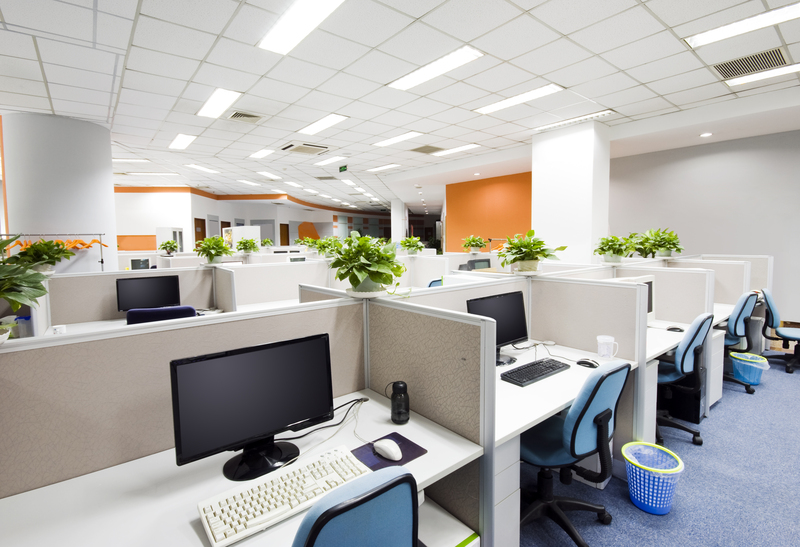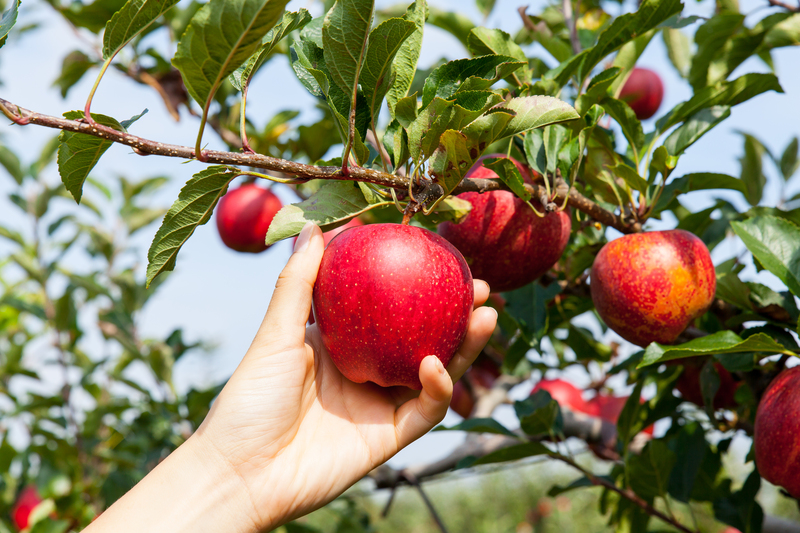Exploring Container Gardening for Urban Living
Posted on 18/08/2025
Exploring Container Gardening for Urban Living
Container gardening has rapidly gained significance in urban living spaces, offering city dwellers a practical avenue to enjoy greenery, grow their food, and enhance their environments. Whether you live in a downtown apartment with a modest balcony or a townhouse with a sunny rooftop, container gardening can transform tiny, concrete areas into vibrant, productive sanctuaries. This comprehensive guide will delve into the essentials, benefits, strategies, and inspiring ideas around container gardening for urban environments.
The Rise of Urban Container Gardening
Urbanization has resulted in decreasing access to ground space, but the human desire for nature and fresh produce hasn't diminished. Urban container gardening offers a sustainable solution for city dwellers to interact with nature, promote sustainability, and increase biodiversity within the metropolitan landscape.
Why is Container Gardening Popular in Cities?
- Space Efficiency: Fits small balconies, patios, rooftops, and even windowsills.
- Flexibility: Plants can be moved to chase the sun or redecorate your space.
- Control: Manage soil quality, pests, and watering with ease.
- Diversity: Grow herbs, vegetables, flowers, and even dwarf fruit trees.
- Aesthetic and Emotional Benefits: Greenery beautifies living areas and supports well-being.

Getting Started with Container Gardening in Urban Spaces
Starting a successful urban container garden doesn't require vast botanical knowledge or huge investments. Follow these practical steps to maximize your chances of thriving plants and beautiful displays.
1. Selecting the Right Containers
- Material: Containers come in various materials, including terracotta, ceramic, plastic, metal, and wood. Choose according to your budget, aesthetic preference, and plant needs.
- Size: Bigger containers retain moisture better but are heavier. Consider matching container size to plant size and growth habits.
- Drainage: Ensure adequate drainage holes to prevent waterlogging--a common cause of plant demise in containers.
- Mobility: Lightweight pots or those with wheels are ideal for frequently moving plants to catch sun or avoid storms.
2. Choosing the Perfect Soil Mix
Soil selection is crucial in container gardening. Avoid using native garden soil, as it may compact and impede drainage. Instead, opt for quality potting mixes that retain moisture yet allow air circulation. Amend with materials like perlite, vermiculite, or compost to further boost fertility and drainage.
3. Plant Selection for Urban Container Gardens
- Herbs: Basil, mint, thyme, and rosemary thrive in pots and are perfect for culinary use.
- Vegetables: Tomatoes, peppers, lettuce, and radishes grow well in containers. Look for compact or "patio" varieties.
- Flowers: Annuals like pansies, petunias, and marigolds provide color and attract pollinators.
- Small Fruit: Strawberries, blueberries, and even dwarf citrus trees can be container grown.
- Succulents: These hardy, low-maintenance plants require less watering--great for busy urbanites.
Essential Care Tips for Thriving Container Gardens
Urban environments present unique challenges, such as fluctuating temperatures, high winds, reflected heat from buildings, and pollution. With careful attention, any enthusiastic city gardener can overcome these obstacles.
Watering Techniques
- Frequency: Containers dry out faster than garden beds.
Water when the upper inch of soil feels dry. - Timing: Early morning is ideal to reduce evaporation and ward off fungus.
- Self-Watering Planters: Consider investing in these to maintain optimal moisture levels, especially if your schedule is busy.
Light and Positioning
Analyze your balcony or rooftop's sun pattern. Most edible plants need six hours of direct sunlight. Shaded spaces can still support ferns, hostas, or certain flowers.
Rotate containers occasionally for even growth.
Nutrition and Fertilizing
- Fertilizer: Container plants quickly deplete nutrients; feed with an all-purpose liquid fertilizer every 2-4 weeks in the growing season.
- Composting: Small-scale composters or worm bins provide a steady supply of organic fertilizer for your potted plants.
Pest and Disease Control
- Vigilance: Check leaves regularly for aphids, mites, or fungal issues.
- Organic Solutions: Use neem oil sprays, insecticidal soap, or handpick pests.
- Companion Planting: Grow basil or marigolds alongside vegetables to naturally repel pests.
Creative Urban Container Gardening Ideas
Add flair and maximize your urban garden's potential with these innovative container gardening solutions:
Vertical Gardens for Urban Containers
- Wall Planters: Attach pocket systems, hooks, or shelves to walls or fences to create a lush green tapestry.
- Stacked Pots: Tiered arrangements use vertical space, ideal for growing herbs or strawberries.
- Pallet Gardens: Upcycle wooden pallets as rustic planters for small flowers and lettuces.
Repurposed and Upcycled Container Ideas
- Creative Containers: Old buckets, tins, baskets, or even bathtubs can become planters with added drainage.
- Hanging Gardens: Suspend pots from beams or railings to create dynamic layers and free up floor space.
- Window Boxes: Install on railings or sills for an instant color boost and easy access to herbs.
Edible Urban Container Gardens
- Salad Bar Containers: Grow lettuce, radicchio, and arugula together for instant salads.
- Pizza Planters: Combine tomatoes, basil, and oregano in one pot for a kitchen-ready pizza garden.
- Mini Orchard: Dwarf apple, fig, or citrus trees add height and seasonal fruit within arm's reach.
Common Challenges and Solutions for Urban Container Gardeners
While container gardening in urban living has many perks, it can come with obstacles. Anticipate and address the following challenges to ensure your urban garden flourishes:
-
Limited Sunlight:
Solution: Opt for shade-tolerant plants or use reflective surfaces (like white walls or mirrors) to boost light levels. -
Restricted Space:
Solution: Grow vertically, use railing planters, and select multi-purpose crops (like nasturtium flowers and leaves, both edible). -
Wind Issues:
Solution: Shield delicate plants with windbreaks, like bamboo screens or dense plant rows. -
Water Access:
Solution: Use self-watering systems, collect rainwater, or keep a watering can handy. -
Urban Pollution:
Solution: Wash edible produce before consumption and opt for hardy, pollution-tolerant varieties.
Environmental and Health Benefits of Urban Container Gardening
Container gardening in cities does more than just beautify spaces--it can create significant health and environmental advantages:
- Improved Air Quality: Plants absorb carbon dioxide and release oxygen, reducing urban air pollutants.
- Urban Biodiversity: Even small gardens attract bees, butterflies, and birds, promoting ecosystem health.
- Stress Reduction: Gardening lowers cortisol levels, enhances mood, and creates mindful relaxation opportunities.
- Fresher, Healthier Food: Access to homegrown herbs and vegetables supports nutrition and reduces reliance on store-bought produce.
- Community Building: Shared urban gardens or visible balcony plantings foster conversations and connections among neighbors.
Expert Tips for Successful Urban Container Gardening
- Plan During the Off-Season: Sketch layouts and research plants in winter to hit the ground running by spring.
- Cluster Containers: Group pots together; this creates a microclimate and simplifies watering.
- Keep a Garden Journal: Track plant performance, sunlight, and watering patterns to optimize next year's results.
- Rotate Crops: Prevent soil exhaustion and pest build-up by changing crops each season.
- Experiment: Try new plant varieties, container shapes, or vertical gardening techniques. Urban gardening is about creativity!

Frequently Asked Questions About Urban Container Gardening
- Can I start a container garden even if I only have a very small balcony or windowsill?
- Absolutely! Container gardening is designed for spaces of all sizes. Even hanging planters or a single windowsill herb box can provide greenery and fresh flavors for your kitchen.
- How deep should my containers be for vegetables?
- Most veggies require 6-12 inches of soil depth. Root vegetables like carrots benefit from at least 12 inches, while herbs can thrive in smaller pots.
- Do I need to change the soil every year?
- It's best to replace or refresh container soil annually to maintain fertility and avoid disease build-up. Add compost or slow-release fertilizers to boost nutrients.
- What's the easiest plant to grow as a beginner?
- Herbs like mint, basil, or parsley are highly recommended--they're fast-growing, forgiving to mistakes, and useful for cooking!
Conclusion: Embrace a Greener Urban Lifestyle
Container gardening for urban living is a transformative practice, bringing the joys and rewards of nature directly to your doorstep. From enhancing balconies with lush foliage to harvesting fresh vegetables just steps away from your kitchen, urban container gardens empower city dwellers to reconnect with the environment and elevate daily well-being.
Regardless of your expertise--or how limited your space may be--urban container gardening offers endless possibilities for creativity, satisfaction, and sustainability. Begin small, experiment with plant varieties, and transform your city living into a thriving green oasis!
Ready to start? Embrace urban container gardening and watch your living space--no matter how small--blossom into a lush, productive retreat.

